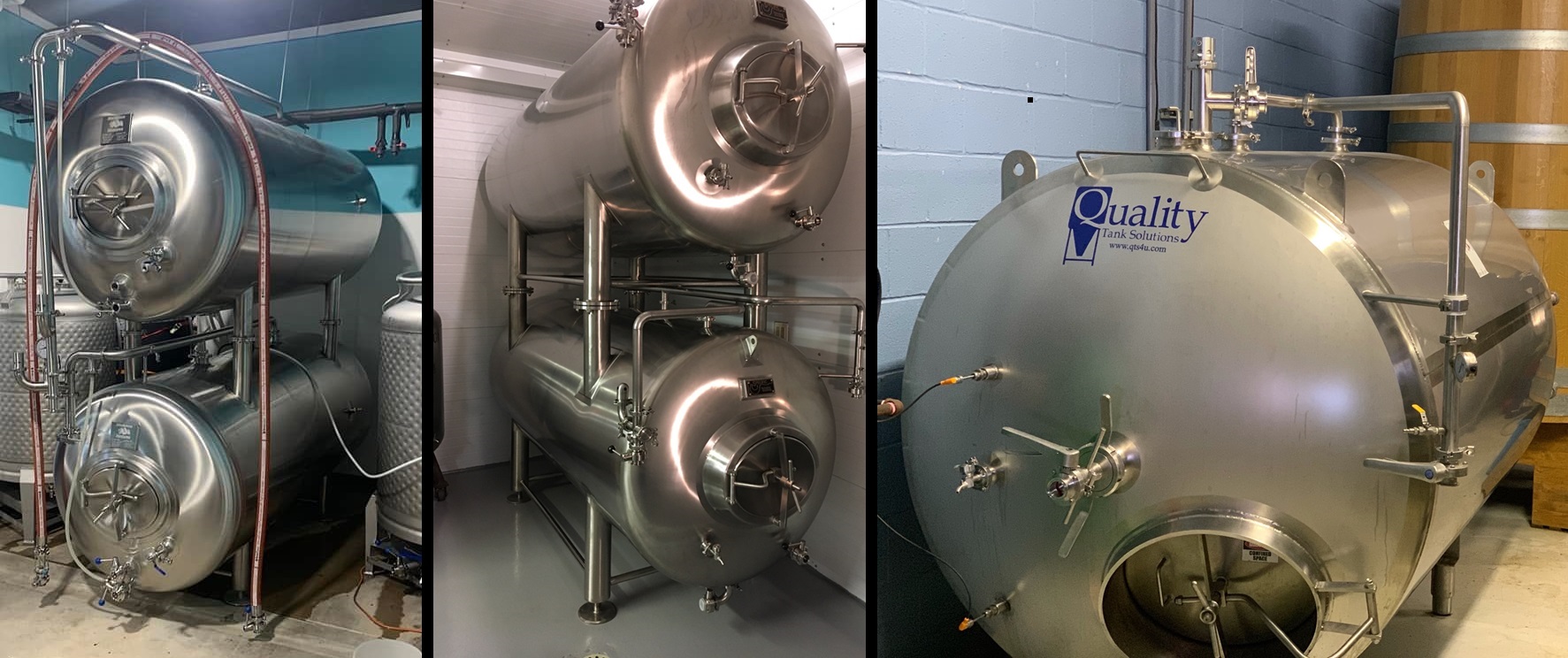If you’ve ever walked into a brewery and have seen what looks like a beer tank sitting on its side, no do not think there was an unfortunate accident that caused it to fall. What you are looking at is a Horizontal lagering tank.
The lagering process is quite lengthy. It requires the beer to be stored in cold temperatures lagering tank anywhere from one to six months (after all, in German the word lager literally translates to the phrase “to store”). This time is needed …. (To get a much deeper look into the lagering process, read this piece from MoreBeer.com).
But why use a special tank for this process?
One of the more common reasons a tank like this would be used in the laggering process has a lot to due with surface area. Unlike traditional tanks that stand vertically, these horizontal tanks offer a larger ratio of surface area to beer depth. This means yeast doesn’t have to travel as far to settle on the bottom of the tank.
However, the surface area is just one of the reasons these tanks may be used. You may not see these styles of tanks in every brewery you visit, but there are a handful of breweries in Pennsylvania that have made the investment in providing a next-level lagering experience. We recently spoke with a few to learn more about the additional benefits of these tanks and why consumers should care.
Jason Ranck, Head Brewer Neshaminy Creek Brewing
“The traditional method throughout the centuries of Brewing has almost always been in horizontal tanks. The yeast has less depth to travel when settling (as opposed to vertical tanks) and the tank has a greater surface area. There is also less static pressure on the yeast when it settles, so the final aging/lagering of the Beer is conducted in harmony with happy yeast. This is why we have 11 horizontal tanks at Berwick Brewing.
Our customers truly enjoy the 7 regular Lagers we have on tap at any given time and look forward to the seasonal offerings such as Bock, Black Lager and Oktoberfest.”
Tom Clark, Owner Berwick Brewing

“We chose to install a horizontal lagering tank because we absolutely love lagers here and wanted a proper conditioning tank. The benefits of a lagering tank for conditioning exist because there is more surface area across the tank which allows for better clarification and additional flavor benefits provided as the yeast drop out of suspension in a more efficient way. We always have a lager chilling in there and a backup ready to go in when the tank is emptied for packaging.”
Matt McMahon, Founder/ Head Brewer Eleventh Hour Brewing
















